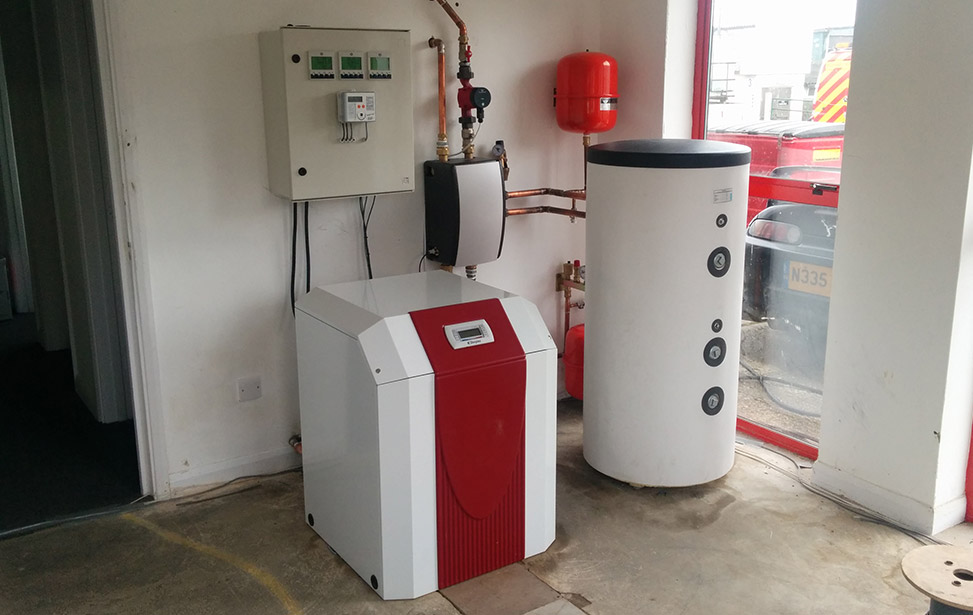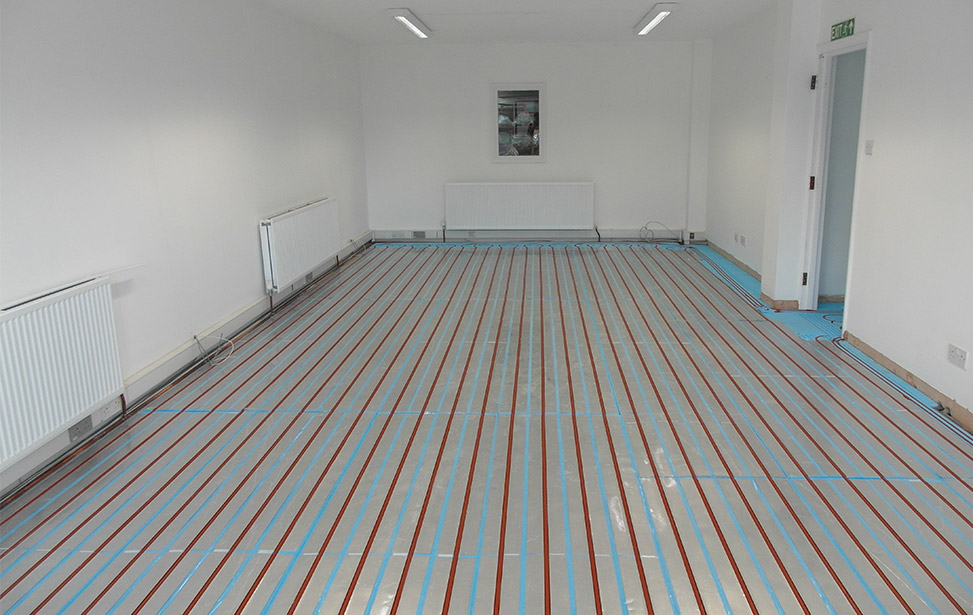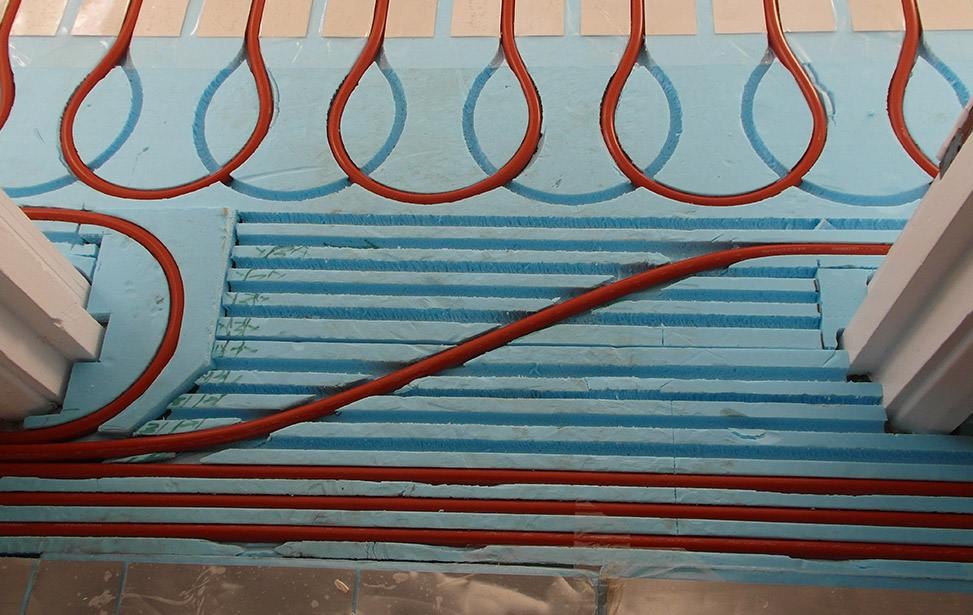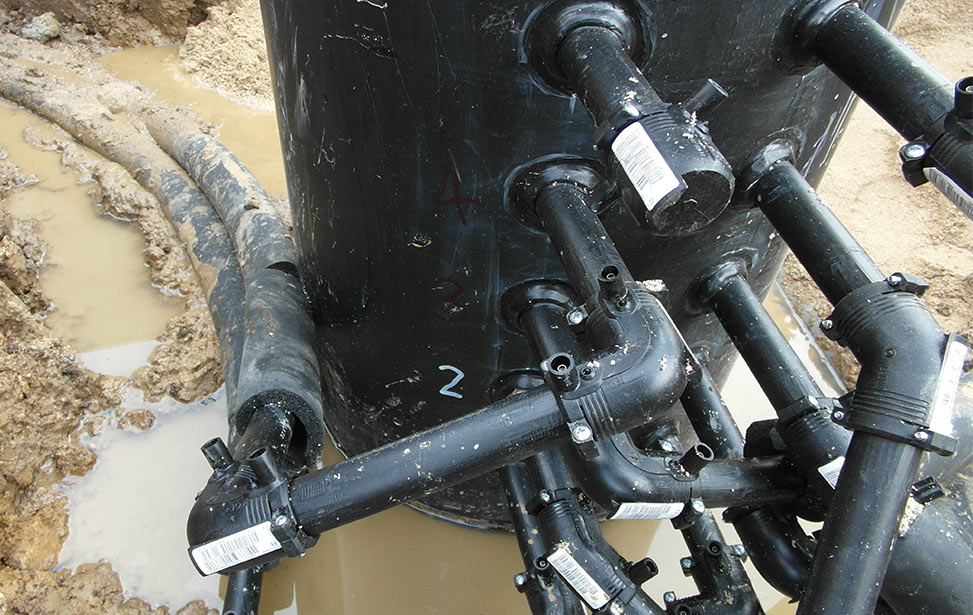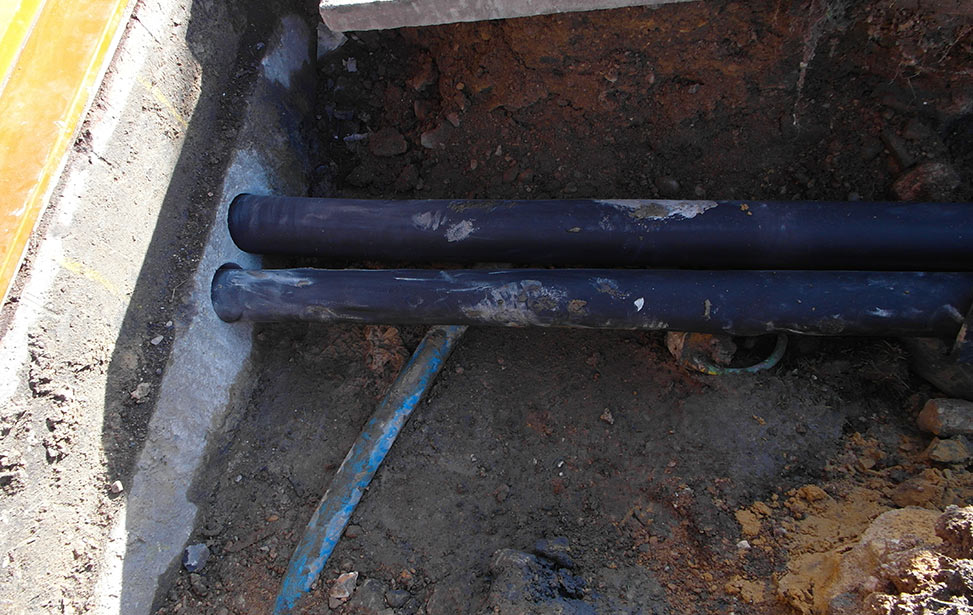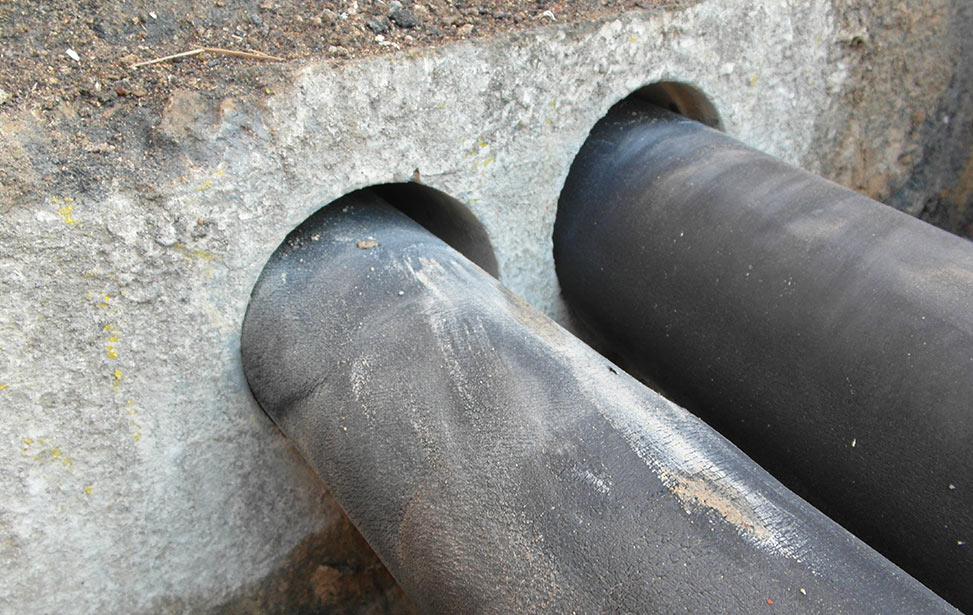Ground Source Heat Pumps
Heat pumps use renewable solar energy to utilize the properties of the latent heat in the refrigerant inside to provide heating. Ground source heat pumps use solar energy stored in the ground. When a ground source heat pump is being used for heating, it turns low grade heat collected from water circulated through pipes buried in the ground into high grade heat to heat a building. The low grade heat converts the refrigerant inside the heat pump from a liquid into a gas. Electricity is then used to mechanically compress the refrigerant back from a gas into a liquid, releasing high grade heat in the process. When used for cooling, the fluid flow circuit within the heat pump is reversed and the heat generated can be stored in the ground for later use.
Heat pump efficiency
The efficiency of a heat pump is calculated by dividing the amount of energy produced as usable heat by the amount of energy required to produce it. This is called the coefficient of performance (COP).
To enable comparison between different heat pumps the COP is shown at standard temperatures, the most common of which is a source temperature of 0C with a flow temperature (in the water used for heating) of 35C.
That isn’t the whole story; understandably the source temperature is going to decrease slowly as heat is extracted from the ground during the heating season. It will start at say 10C in October and decrease slowly as heat is extracted more quickly than it is recovered throughout during the heating season. The government standard MIS 3005, covering the installation of heat pumps, states that the extraction of heat shall not result in a ground temperature lower than 0C, so that should be the lowest source temperature.
The changing efficiency throughout the heating season is expressed as the Seasonal Performance Factor or SPF. When the heating season is over, ground temperature recovers, absorbing solar energy at the surface and conducting heat from the surrounding area.
To calculate the rate at which we can extract heat from the ground while maintaining the source temperature above 0C we work out the number of hours the system would need to run at full capacity to cover the heat demand. This is called the full load equivalent or FLEQ.
Remember, The higher the COP, the more “free” environmental energy the heat pump is using!



